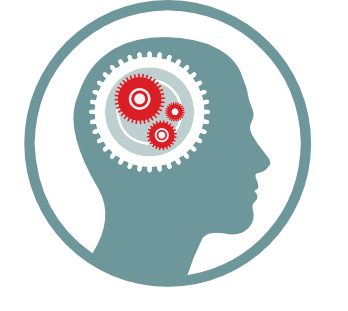As is appropriate when promoting curiosity, it makes no sense offering ‘solutions’ if you have not considered the underlying needs first. So here is an inquiry into these needs:
Your (hidden) needs, i.e., your current situation
All improvement starts with a reflective attitude. To put that to the test: do you recognise some of the following situations, often in a combination?
- As a Team/ Department Manager in an organisation,
- Your team deals well with “knowns”, but has trouble with working with “unknowns”
- You feel overwhelmed by (complex) challenges that you are facing
- Your team (unsuccessfully) tried out tools that promise simple solutions
- Your team enthusiastically develops new ideas that turn out not to work in practice.
- … or ideas have trouble getting thought of in the first place
- As education manager: :
- You see the need for the 3 C’s as important skills for students but are not sure how to properly integrate it into curricula and how to train teaching staff.
- As teacher:
- You want to pay more attention to stimulating creative thinking but feel ill-equipped for it.
- You value training pupils in getting base knowledge but want to mix in skills like critical thinking and creativity much more, even if this is not material for central testing.
Most professionals encounter such situations, acknowledging is the first step to make a change. If you want to be sure that these situations keep occurring, just carry on. If on the other hand you want to have a decent chance to be able to deal with these situations in a better way, read on.
How can The New ABC help you and why does it matter?
On the training details page you can read about the main services on offer, which for ease of communication could all be called forms of an innovation training. You can even call them training in becoming more agile if you want.
In reality it’s more complicated than that. Learning should become part of the entire DNA. Creativity and Curiosity are not commodities that can be obtained by standardised tools so prepare for a longer and more winding journey..If we work together I will share my thoughts on such a journey.
DUE TO LIMITED AVAILABILITY i CAN FOR NOW HELP YOU TO START YOUR JOURNEY AND SUGGEST NEXT STEPS.
I can, if that helps you on the short term, also offer my own creative input but my main aim is to enhance your own skills, not (just) show mine.
Triple-C and why this is important
The ultimate aim is to help your team and yourself rediscover your innate curiosity and in that process boost all three C’s: Critical Thinking, Curiosity and Creativity. How do these ‘Triple C’ differ or overlap? Go to this post on Triple-C later to get a first idea.
Some obvious moments when Triple C-proficiency are important are:
- When identifying and ‘defining’ your problem
- When developing future scenarios (work back from the emerging future)
- When sensing whether there are alternative problem definitions/ idea directions
- Working around barriers that come your way during execution of any task
- Selection and in depth development of good directions forward (‘solutions’)
In short, if you think about it, there are very few activities that would not benefit from getting better at Triple-C. Which is exactly what the latest research says: it;’s not a Nice to Have but a Must Do, also for your financial bottom line.
The journey
The starting point is a simple and effective 4-step process:
1. Identify your current state,
2. Discuss your ambition,
3. Determine the gap
4. Decide how to fill this gap, using the methods that I have at my disposal.
The details will vary for ‘regular’ professionals and educational institutes (including teachers). You can download the summary of the general process here and the version for educational institutes here.
Getting started
Gotten more curious? (pun so very much intended). The details of your journey depend on the steps 1-3 as outlined above. These steps take up to one day. Then I can hep you on your way.
The individual basic services from which we design your change process (i.e., execution in step 4) are listed here (including expected results and duration). Click here for some examples of past and current projects. You can also check out what other people have to say about their experience.
If any of this triggers your interest, Contact me..

